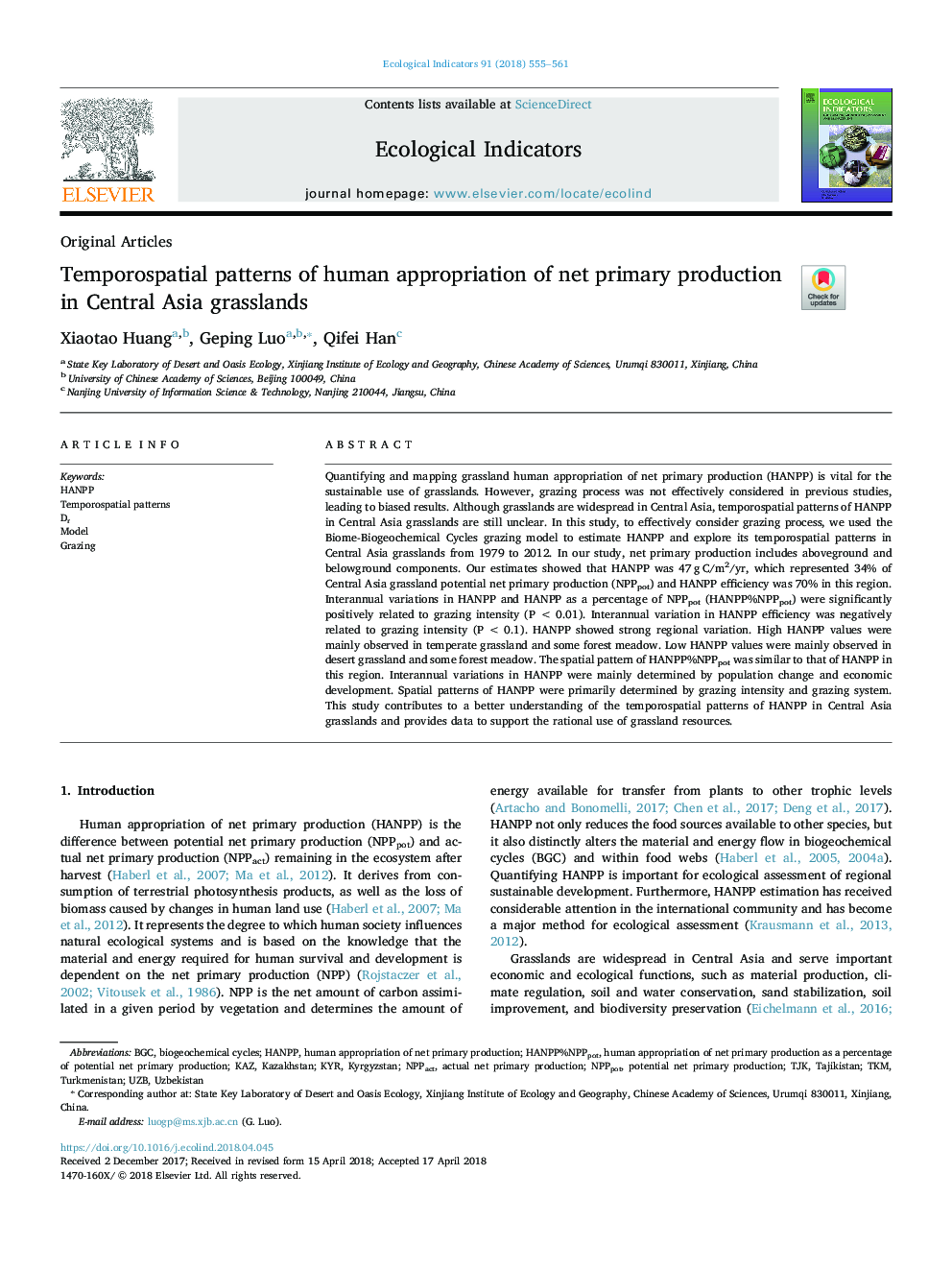| Article ID | Journal | Published Year | Pages | File Type |
|---|---|---|---|---|
| 8845374 | Ecological Indicators | 2018 | 7 Pages |
Abstract
Quantifying and mapping grassland human appropriation of net primary production (HANPP) is vital for the sustainable use of grasslands. However, grazing process was not effectively considered in previous studies, leading to biased results. Although grasslands are widespread in Central Asia, temporospatial patterns of HANPP in Central Asia grasslands are still unclear. In this study, to effectively consider grazing process, we used the Biome-Biogeochemical Cycles grazing model to estimate HANPP and explore its temporospatial patterns in Central Asia grasslands from 1979 to 2012. In our study, net primary production includes aboveground and belowground components. Our estimates showed that HANPP was 47â¯gâ¯C/m2/yr, which represented 34% of Central Asia grassland potential net primary production (NPPpot) and HANPP efficiency was 70% in this region. Interannual variations in HANPP and HANPP as a percentage of NPPpot (HANPP%NPPpot) were significantly positively related to grazing intensity (Pâ¯<â¯0.01). Interannual variation in HANPP efficiency was negatively related to grazing intensity (Pâ¯<â¯0.1). HANPP showed strong regional variation. High HANPP values were mainly observed in temperate grassland and some forest meadow. Low HANPP values were mainly observed in desert grassland and some forest meadow. The spatial pattern of HANPP%NPPpot was similar to that of HANPP in this region. Interannual variations in HANPP were mainly determined by population change and economic development. Spatial patterns of HANPP were primarily determined by grazing intensity and grazing system. This study contributes to a better understanding of the temporospatial patterns of HANPP in Central Asia grasslands and provides data to support the rational use of grassland resources.
Keywords
Related Topics
Life Sciences
Agricultural and Biological Sciences
Ecology, Evolution, Behavior and Systematics
Authors
Xiaotao Huang, Geping Luo, Qifei Han,
